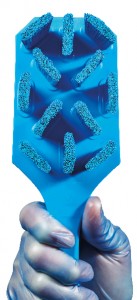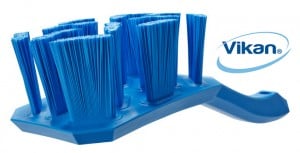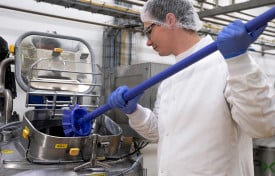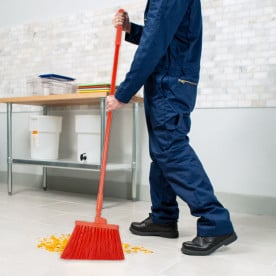 It is quite easy to go through the day without taking a second look or give a second thought to the brushes we may use in our food industry operations or in our homes. Considering the vigorous workouts that we give our brushes, and the harsh conditions we expose them to, these workhorses are probably, at best, considered a basic tool with a basic function. Yet, the brushes we utilize today in industrial and domestic realms are the result of continuously morphing science and engineering standards.
It is quite easy to go through the day without taking a second look or give a second thought to the brushes we may use in our food industry operations or in our homes. Considering the vigorous workouts that we give our brushes, and the harsh conditions we expose them to, these workhorses are probably, at best, considered a basic tool with a basic function. Yet, the brushes we utilize today in industrial and domestic realms are the result of continuously morphing science and engineering standards.
For instance, filaments, the frontline soldiers in scouring, are put under a great deal of constant duress. In order to ensure that filaments (which can be made of several different materials, including polyester and polypropylene) don’t shed like needles from a dry Christmas tree, various settings have been developed to both allow durability and reflect standards of sanitary practice.
For basic cleaning, filaments have been traditionally set in with staples. Filaments are held in place, allowing for a level of durability and the ability to retain the filaments. However useful, staple-set brushes, because of their setting do permit small pieces of debris to get caught within the setting and may allow the growth of potential bacteria that get caught there. Such general-use brushes may work within certain circumstances; yet, they present some issues when contending with ensuring sanitary standards in food industry environments.
To provide durability and a better sanitary standard, many brushes now are staple-set (with stainless steel staples) as well as being encapsulated within a layer of resin. The resin reinforces the filaments as well as provides a barrier for bacteria and debris. This allows for easier washing and additional durability. Because of these additional benefits, resin-set brushes are often utilized in both industrial and domestic environments.
 A third method was introduced this year by Vikan, called “Ultra Safe Technology” where filaments are molded as part of filament security units placed into patterns on the brush head (depending on the type of brush). Staples are not utilized nor are resins, with the aim to offer a more secure, sanitary, easy-to-clean, and ecofriendly standard of performance.
A third method was introduced this year by Vikan, called “Ultra Safe Technology” where filaments are molded as part of filament security units placed into patterns on the brush head (depending on the type of brush). Staples are not utilized nor are resins, with the aim to offer a more secure, sanitary, easy-to-clean, and ecofriendly standard of performance.
As you can see, there is more than meets the eye when it comes to world of brushes. You can check out our whole line of brushes, including our color-coded offerings right here. To view our new Vikan “Ultra Safe Technology” brushes click here. In addition, be sure to be in touch with our sanitation specialists at Nelson-Jameson, Inc. to help you decide on the right brush for the right job.







